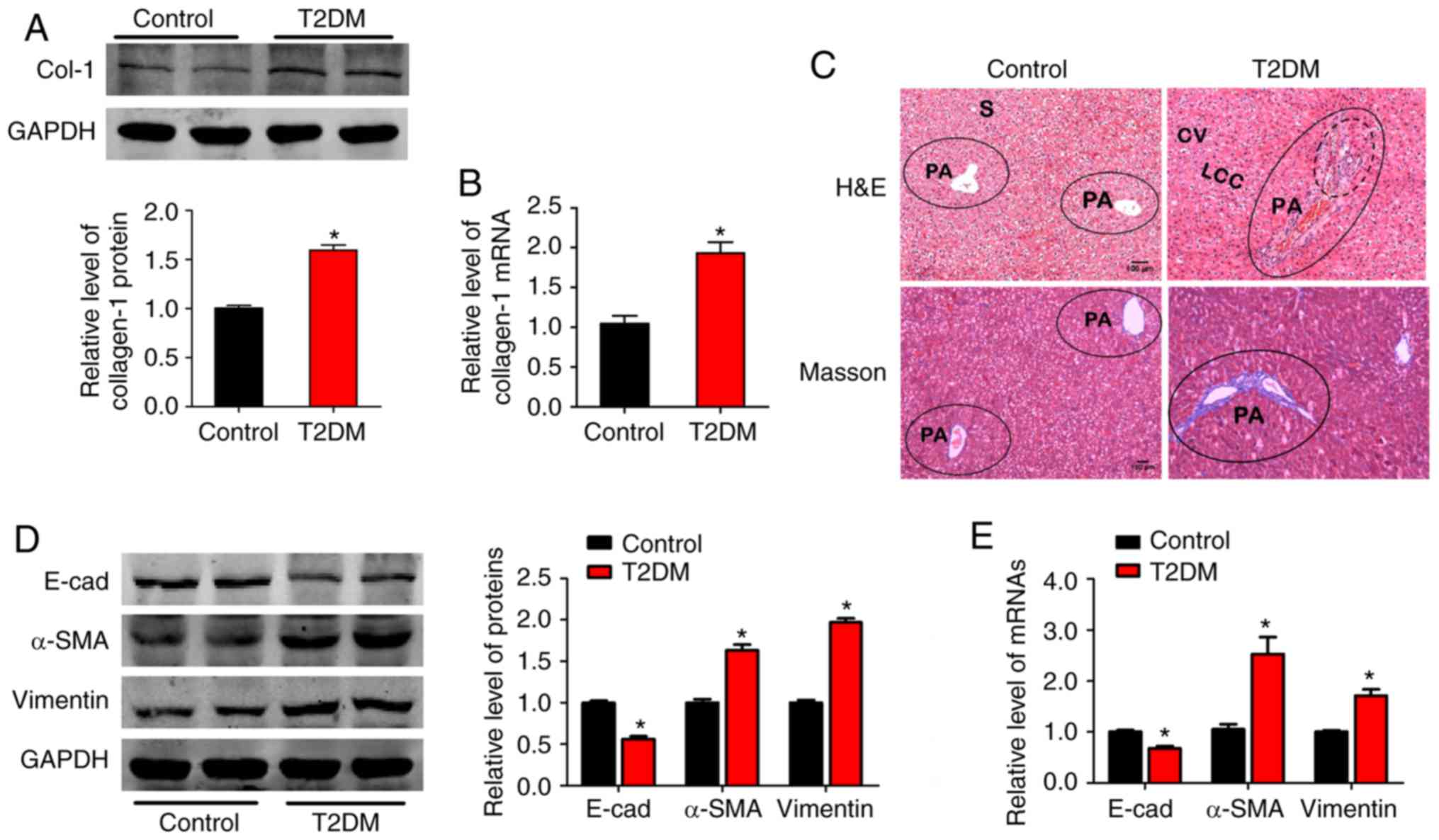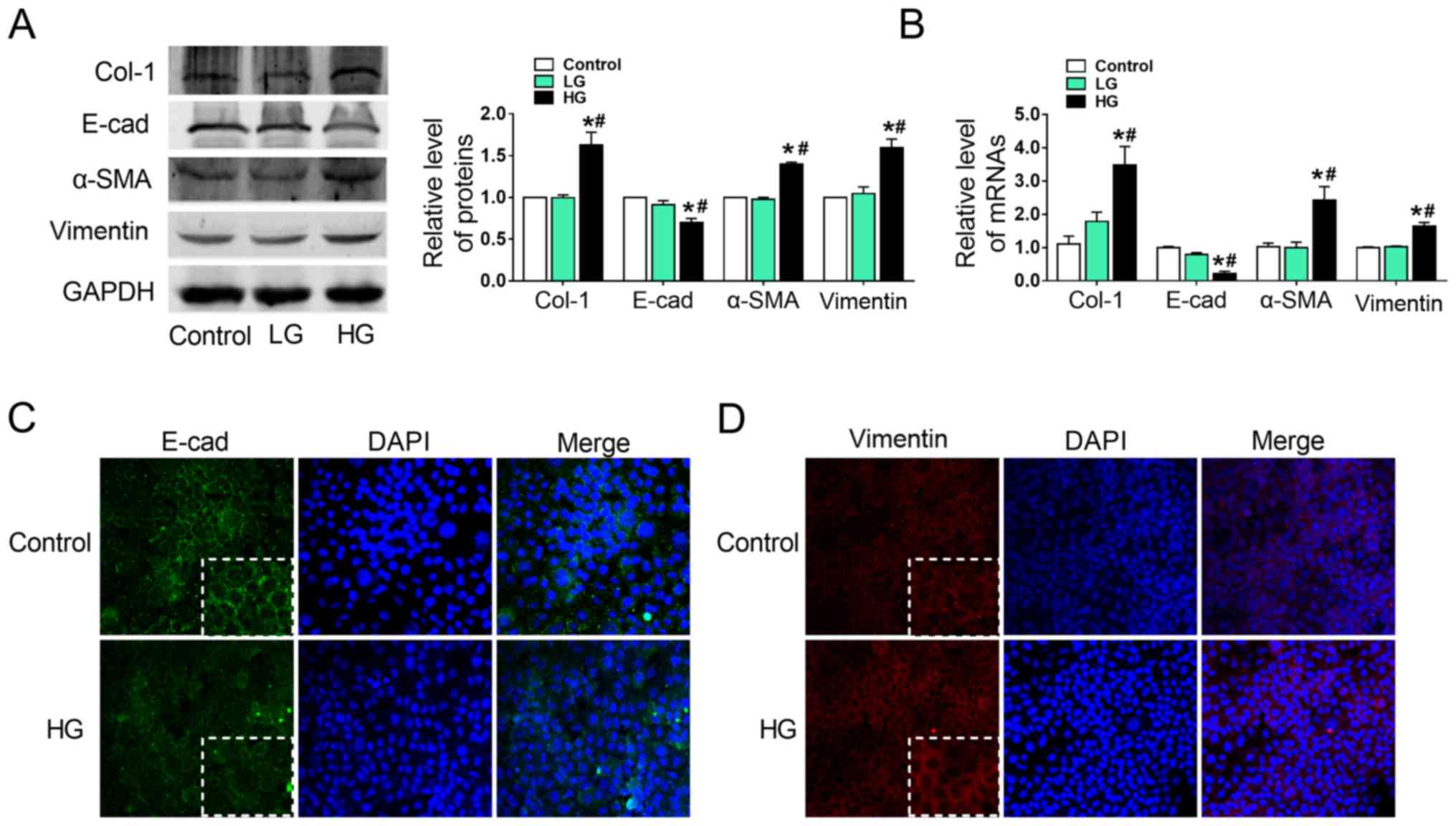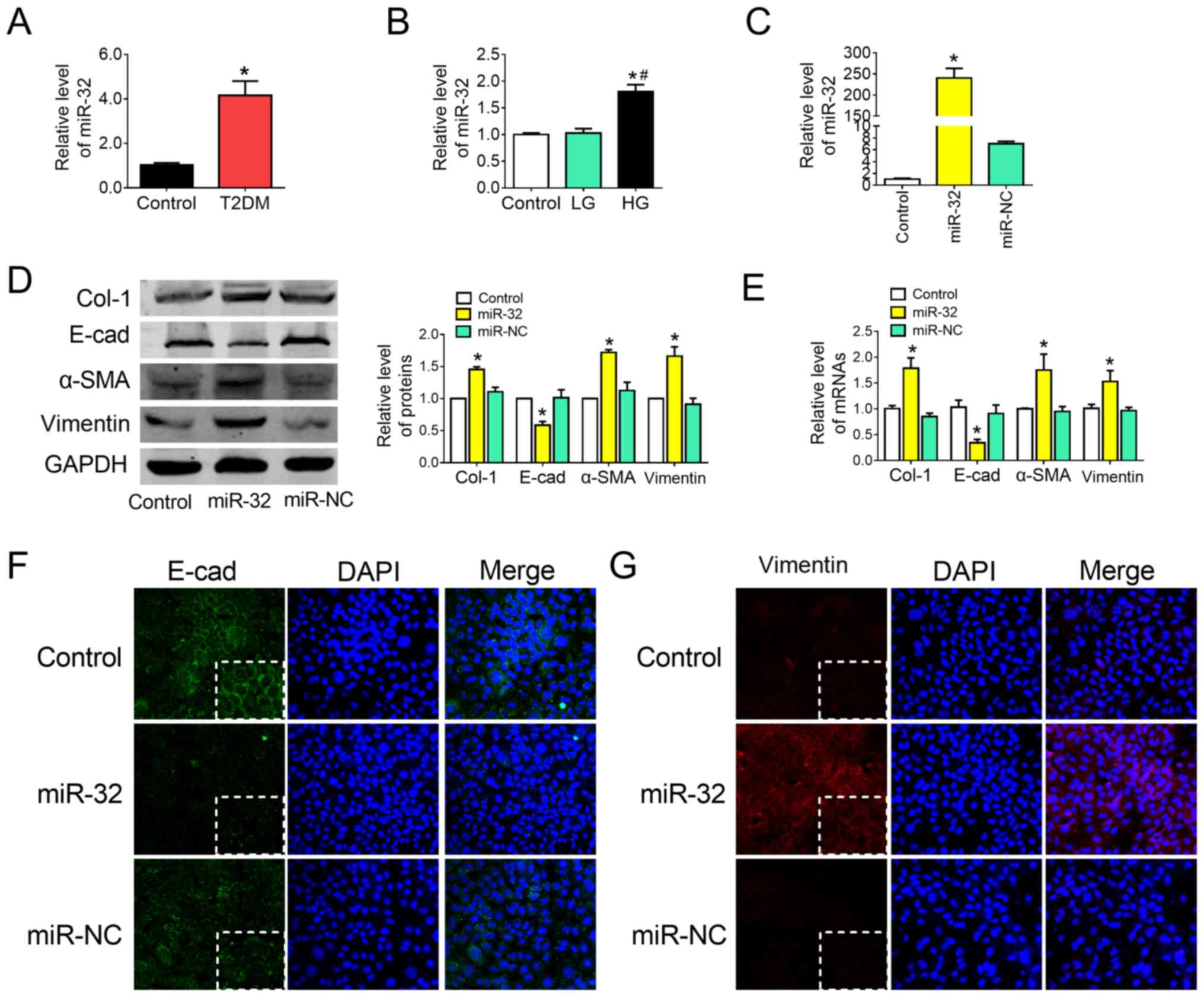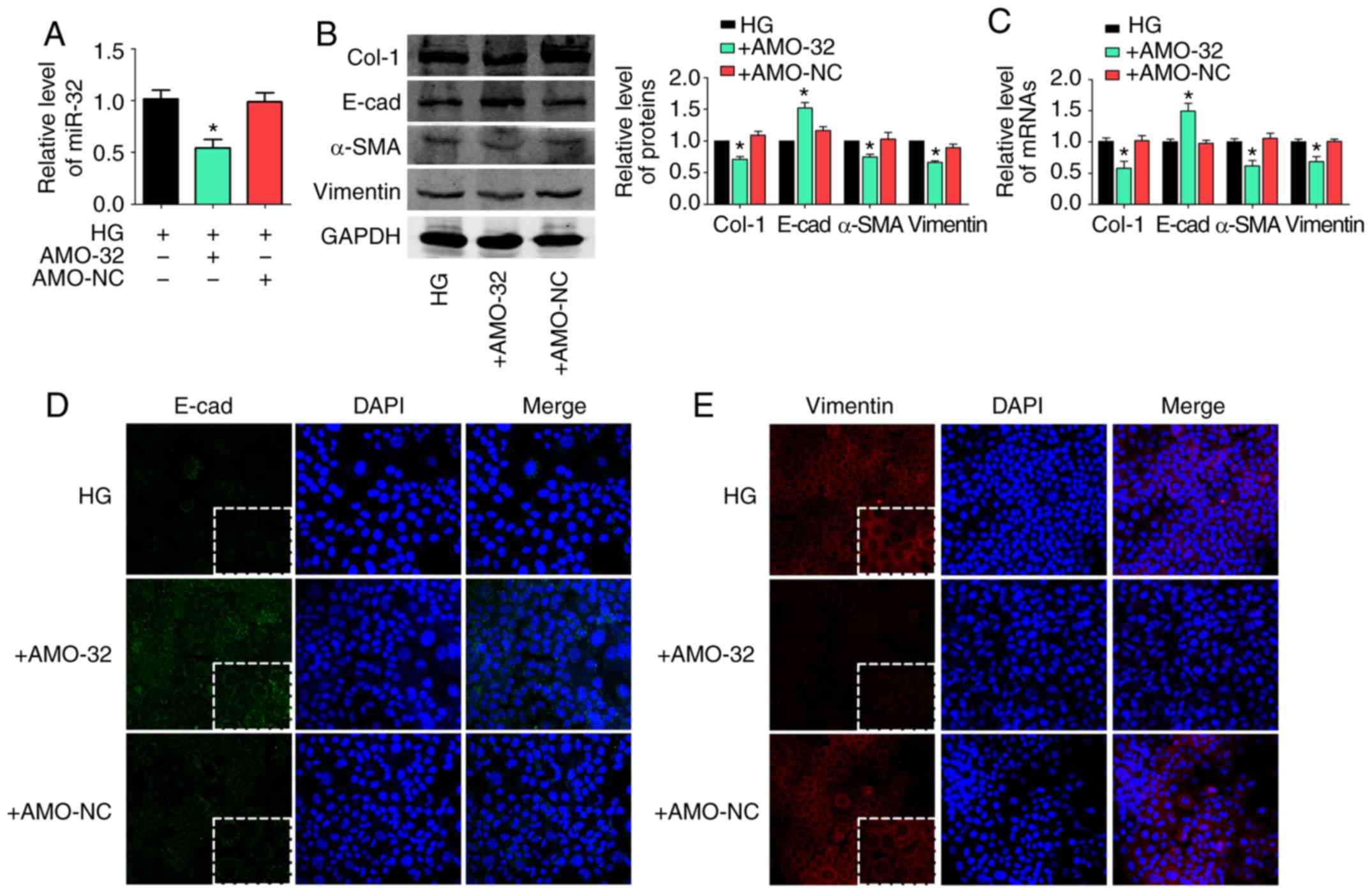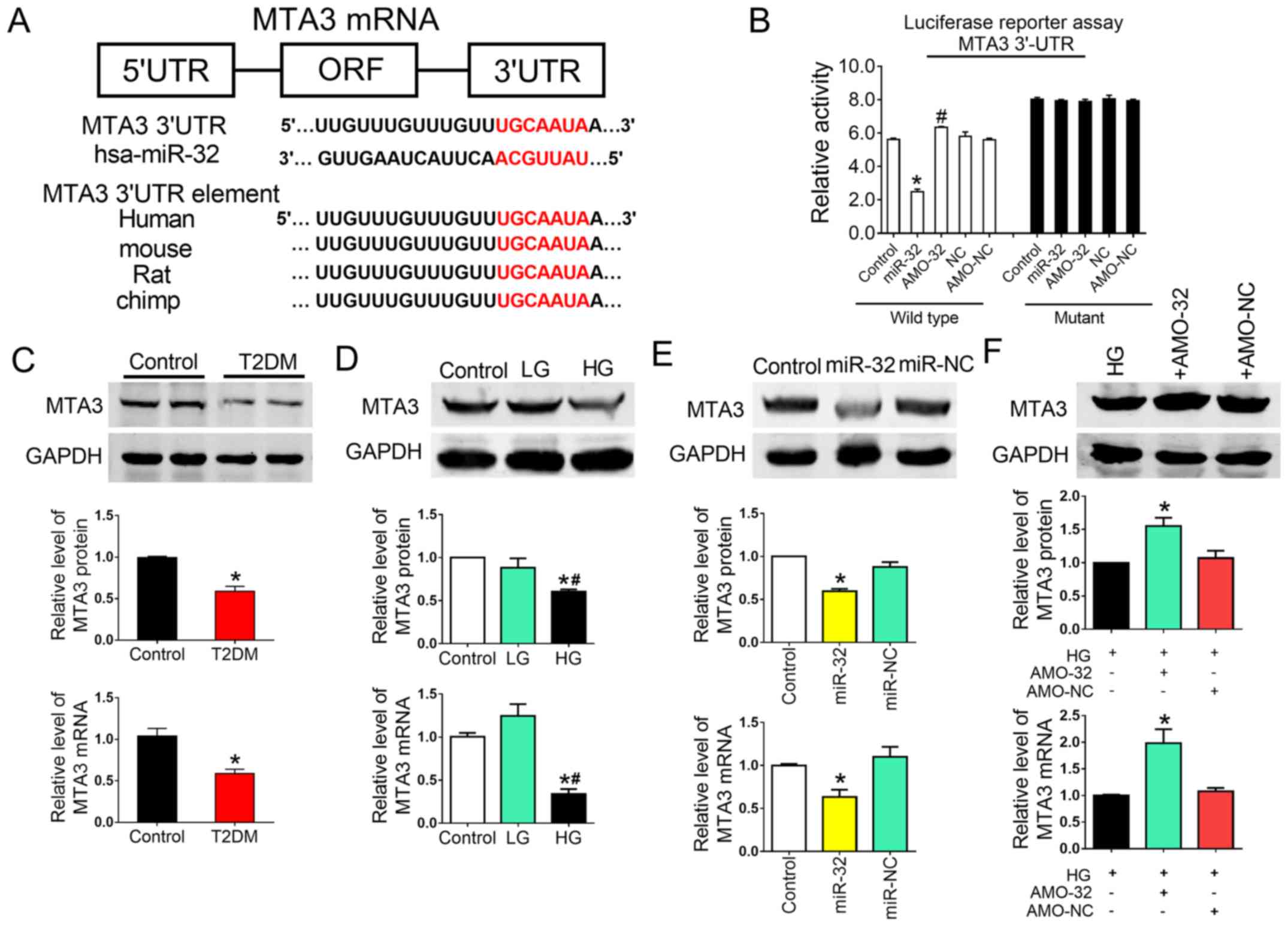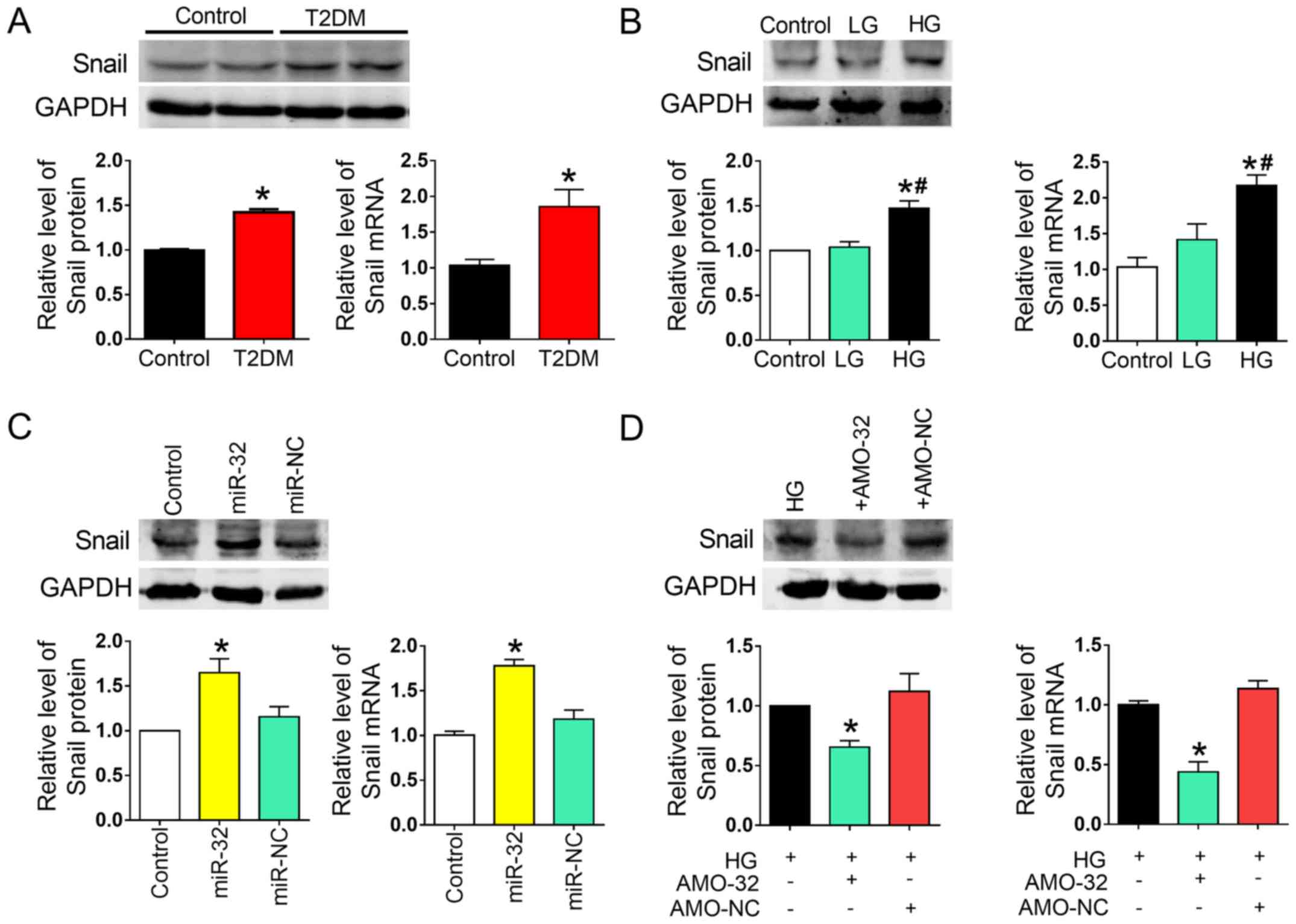|
1
|
Gonçalves NP, Vægter CB, Andersen H,
Østergaard L, Calcutt NA and Jensen TS: Schwann cell interactions
with axons and microvessels in diabetic neuropathy. Nat Rev Neurol.
13:135–147. 2017. View Article : Google Scholar : PubMed/NCBI
|
|
2
|
Niu HS, Chao PC, Ku PM, Niu CS, Lee KS and
Cheng JT: Amarogentin ameliorates diabetic disorders in animal
models. Naunyn Schmiedebergs Arch Pharmacol. 389:1215–1223. 2016.
View Article : Google Scholar : PubMed/NCBI
|
|
3
|
Li X, Du N, Zhang Q, Li J, Chen X, Liu X,
Hu Y, Qin W, Shen N, Xu C, et al: MicroRNA-30d regulates
cardiomyocyte pyroptosis by directly targeting foxo3a in diabetic
cardiomyopathy. Cell Death Dis. 5:e14792014. View Article : Google Scholar : PubMed/NCBI
|
|
4
|
Liang H, Gu Y, Li T, Zhang Y, Huangfu L,
Hu M, Zhao D, Chen Y, Liu S, Dong Y, et al: Integrated analyses
identify the involvement of microRNA-26a in epithelial-mesenchymal
transition during idiopathic pulmonary fibrosis. Cell Death Dis.
5:e12382014. View Article : Google Scholar : PubMed/NCBI
|
|
5
|
Zhuo J, Zeng Q, Cai D, Zeng X, Chen Y, Gan
H, Huang X, Yao N, Huang D and Zhang C: Evaluation of type 2
diabetic mellitus animal models via interactions between insulin
and mitogenactivated protein kinase signaling pathways induced by a
high fat and sugar diet and streptozotocin. Mol Med Rep.
17:5132–5142. 2018.PubMed/NCBI
|
|
6
|
Bril F and Cusi K: Management of
nonalcoholic fatty liver disease in patients with type 2 diabetes:
A call to action. Diabetes Care. 40:419–430. 2017. View Article : Google Scholar : PubMed/NCBI
|
|
7
|
Jiang H, Qin XJ, Li WP, Ma R, Wang T and
Li ZQ: Effects of Shu Gan Jian Pi formula on rats with carbon
tetrachlorideinduced liver fibrosis using serum metabonomics based
on gas chromatographytime of flight mass spectrometry. Mol Med Rep.
16:3901–3909. 2017. View Article : Google Scholar : PubMed/NCBI
|
|
8
|
Li YK, Ma DX, Wang ZM, Hu XF, Li SL, Tian
HZ, Wang MJ, Shu YW and Yang J: The glucagon-like peptide-1 (GLP-1)
analog liraglutide attenuates renal fibrosis. Pharmacol Res.
131:102–111. 2018. View Article : Google Scholar : PubMed/NCBI
|
|
9
|
Li L, Li H, Zhang Z, Zheng J, Shi Y, Liu
J, Cao Y, Yuan X and Chu Y: Recombinant truncated TGF-β receptor II
attenuates carbon tetrachlorideinduced epithelialmesenchymal
transition and liver fibrosis in rats. Mol Med Rep. 17:315–321.
2018.PubMed/NCBI
|
|
10
|
Park JH, Yoon J, Lee KY and Park B:
Effects of geniposide on hepatocytes undergoing
epithelial-mesenchymal transition in hepatic fibrosis by targeting
TGFβ/Smad and ERK-MAPK signaling pathways. Biochimie. 113:26–34.
2015. View Article : Google Scholar : PubMed/NCBI
|
|
11
|
Lee WR, Kim KH, An HJ, Kim JY, Lee SJ, Han
SM, Pak SC and Park KK: Apamin inhibits hepatic fibrosis through
suppression of transforming growth factor β1-induced hepatocyte
epithelial-mesenchymal transition. Biochem Biophys Res Commun.
450:195–201. 2014. View Article : Google Scholar : PubMed/NCBI
|
|
12
|
Lovisa S, LeBleu VS, Tampe B, Sugimoto H,
Vadnagara K, Carstens JL, Wu CC, Hagos Y, Burckhardt BC,
Pentcheva-Hoang T, et al: Epithelial-to-mesenchymal transition
induces cell cycle arrest and parenchymal damage in renal fibrosis.
Nat Med. 21:998–1009. 2015. View
Article : Google Scholar : PubMed/NCBI
|
|
13
|
Thiery JP, Acloque H, Huang RY and Nieto
MA: Epithelial-mesenchymal transitions in development and disease.
Cell. 139:871–890. 2009. View Article : Google Scholar : PubMed/NCBI
|
|
14
|
Fujita N, Jaye DL, Kajita M, Geigerman C,
Moreno CS and Wade PA: MTA3, a Mi-2/NuRD complex subunit, regulates
an invasive growth pathway in breast cancer. Cell. 113:207–219.
2003. View Article : Google Scholar : PubMed/NCBI
|
|
15
|
Qin W, Du N, Zhang L, Wu X, Hu Y, Li X,
Shen N, Li Y, Yang B, Xu C, et al: Genistein alleviates pressure
overload-induced cardiac dysfunction and interstitial fibrosis in
mice. Br J Pharmacol. 172:5559–5572. 2015. View Article : Google Scholar : PubMed/NCBI
|
|
16
|
Bartel DP: MicroRNAs: Genomics,
biogenesis, mechanism, and function. Cell. 116:281–297. 2004.
View Article : Google Scholar : PubMed/NCBI
|
|
17
|
Du B, Wang X, Wu D, Wang T, Yang X, Wang
J, Shi X, Chen L and Zhang W: MicroRNA expression profiles identify
biomarkers for predicting the response to chemoradiotherapy in
rectal cancer. Mol Med Rep. 18:1909–1916. 2018.PubMed/NCBI
|
|
18
|
Huangfu L, Liang H, Wang G, Su X, Li L, Du
Z, Hu M, Dong Y, Bai X, Liu T, et al: miR-183 regulates autophagy
and apoptosis in colorectal cancer through targeting of UVRAG.
Oncotarget. 7:4735–4745. 2016. View Article : Google Scholar : PubMed/NCBI
|
|
19
|
Zhang T, Hu Y, Ju J, Hou L, Li Z, Xiao D,
Li Y, Yao J, Wang C, Zhang Y and Zhang L: Downregulation of miR-522
suppresses proliferation and metastasis of non-small cell lung
cancer cells by directly targeting DENN/MADD domain containing 2D.
Sci Rep. 6:193462016. View Article : Google Scholar : PubMed/NCBI
|
|
20
|
Zhang Y, Qin W, Zhang L, Wu X, Du N, Hu Y,
Li X, Shen N, Xiao D, Zhang H, et al: MicroRNA-26a prevents
endothelial cell apoptosis by directly targeting TRPC6 in the
setting of atherosclerosis. Sci Rep. 5:94012015. View Article : Google Scholar : PubMed/NCBI
|
|
21
|
Yang B, Lin H, Xiao J, Lu Y, Luo X, Li B,
Zhang Y, Xu C, Bai Y, Wang H, et al: The muscle-specific microRNA
miR-1 regulates cardiac arrhythmogenic potential by targeting GJA1
and KCNJ2. Nat Med. 13:486–491. 2007. View
Article : Google Scholar : PubMed/NCBI
|
|
22
|
Sombetzki M, Loebermann M and Reisinger
EC: Vector-mediated microRNA-21 silencing ameliorates granulomatous
liver fibrosis in Schistosoma japonicum infection. Hepatology.
61:1787–1789. 2015. View Article : Google Scholar : PubMed/NCBI
|
|
23
|
Wu W, Yang J, Feng X, Wang H, Ye S, Yang
P, Tan W, Wei G and Zhou Y: MicroRNA-32 (miR-32) regulates
phosphatase and tensin homologue (PTEN) expression and promotes
growth, migration, and invasion in colorectal carcinoma cells. Mol
Cancer. 12:302013. View Article : Google Scholar : PubMed/NCBI
|
|
24
|
Yan SY, Chen MM, Li GM, Wang YQ and Fan
JG: miR-32 induces cell proliferation, migration, and invasion in
hepatocellular carcinoma by targeting PTEN. Tumour Biol.
36:4747–4755. 2015. View Article : Google Scholar : PubMed/NCBI
|
|
25
|
Zhang Y, Liu X, Bai X, Lin Y, Li Z, Fu J,
Li M, Zhao T, Yang H, Xu R, et al: Melatonin prevents endothelial
cell pyroptosis via regulation of long noncoding RNA
MEG3/miR-223/NLRP3 axis. J Pineal Res. 64:e124492018. View Article : Google Scholar
|
|
26
|
Livak KJ and Schmittgen TD: Analysis of
relative gene expression data using real-time quantitative PCR and
the 2(-Delta Delta C(T)) method. Methods. 25:402–408. 2001.
View Article : Google Scholar : PubMed/NCBI
|
|
27
|
Zálešák M, BlaŽíček P, Pancza D, Gablovský
I, Štrbák V and Ravingerová T: Hyperosmotic environment blunts
effectivity of ischemic preconditioning against
ischemia-reperfusion injury and improves ischemic tolerance in
non-preconditioned isolated rat hearts. Physiol Res. 65:1045–1051.
2016.PubMed/NCBI
|
|
28
|
Kim NH, Cha YH, Lee J, Lee SH, Yang JH,
Yun JS, Cho ES, Zhang X, Nam M, Kim N, et al: Snail reprograms
glucose metabolism by repressing phosphofructokinase PFKP allowing
cancer cell survival under metabolic stress. Nat Commun.
8:143742017. View Article : Google Scholar : PubMed/NCBI
|
|
29
|
Dong H, Guo H, Xie L, Wang G, Zhong X,
Khoury T, Tan D and Zhang H: The metastasis-associated gene MTA3, a
component of the Mi-2/NuRD transcriptional repression complex,
predicts prognosis of gastroesophageal junction adenocarcinoma.
PLoS One. 8:e629862013. View Article : Google Scholar : PubMed/NCBI
|
|
30
|
Dhasarathy A, Kajita M and Wade PA: The
transcription factor snail mediates epithelial to mesenchymal
transitions by repression of estrogen receptor-alpha. Mol
Endocrinol. 21:2907–2918. 2007. View Article : Google Scholar : PubMed/NCBI
|
|
31
|
Xiao D, Zhou T, Fu Y, Wang R, Zhang H, Li
M, Lin Y, Li Z, Xu C, Yang B, et al: MicroRNA-17 impairs glucose
metabolism in insulin-resistant skeletal muscle via repressing
glucose transporter 4 expression. Eur J Pharmacol. 838:170–176.
2018. View Article : Google Scholar : PubMed/NCBI
|
|
32
|
Zhou T, Meng X, Che H, Shen N, Xiao D,
Song X, Liang M, Fu X, Ju J, Li Y, et al: Regulation of insulin
resistance by multiple miRNAs via targeting the GLUT4 signalling
pathway. Cell Physiol Biochem. 38:2063–2078. 2016. View Article : Google Scholar : PubMed/NCBI
|
|
33
|
Tsay HC, Yuan Q, Balakrishnan A, Kaiser M,
Möbus S, Kozdrowska E, Farid M, Tegtmeyer PK, Borst K, Vondran FWR,
et al: Hepatocyte-specific suppression of microRNA-221-3p mitigates
liver fibrosis. J Hepatol S0168-8278. 32635–32637. 2018.
|
|
34
|
Ji F, Wang K, Zhang Y, Mao XL, Huang Q,
Wang J, Ye L and Li Y: miR-542-3p controls hepatic stellate cell
activation and fibrosis via targeting BMP-7. J Cell Biochem.
120:4573–4581. 2019. View Article : Google Scholar : PubMed/NCBI
|
|
35
|
Bala S, Csak T, Saha B, Zatsiorsky J,
Kodys K, Catalano D, Satishchandran A and Szabo G: The
pro-inflammatory effects of miR-155 promote liver fibrosis and
alcohol-induced steatohepatitis. J Hepatol. 64:1378–1387. 2016.
View Article : Google Scholar : PubMed/NCBI
|
|
36
|
Roderburg C, Urban GW, Bettermann K, Vucur
M, Zimmermann H, Schmidt S, Janssen J, Koppe C, Knolle P, Castoldi
M, et al: Micro-RNA profiling reveals a role for miR-29 in human
and murine liver fibrosis. Hepatology. 53:209–218. 2011. View Article : Google Scholar : PubMed/NCBI
|
|
37
|
Chen E, Cen Y, Lu D, Luo W and Jiang H:
IL-22 inactivates hepatic stellate cells via downregulation of the
TGF-β1/Notch signaling pathway. Mol Med Rep. 17:5449–5453.
2018.PubMed/NCBI
|
|
38
|
Liu Z, Wang J, Xing W, Peng Y, Huang Y and
Fan X: Role of DDAH/ADMA pathway in TGF-β1-mediated activation of
hepatic stellate cells. Mol Med Rep. 17:2549–2556. 2018.PubMed/NCBI
|
|
39
|
Chang J, Hu S, Wang W, Li Y, Zhi W, Lu S,
Shi Q, Wang Y and Yang Y: Matrine inhibits prostate cancer via
activation of the unfolded protein response/endoplasmic reticulum
stress signaling and reversal of epithelial to mesenchymal
transition. Mol Med Rep. 18:945–957. 2018.PubMed/NCBI
|
|
40
|
He B, Chiba Y, Li H, de Vega S, Tanaka K,
Yoshizaki K, Ishijima M, Yuasa K, Ishikawa M, Rhodes C, et al:
Identification of the novel tooth-specific transcription factor
AmeloD. J Dent Res. 14:220345188082542018.
|
|
41
|
Manni M, Gupta S, Ricker E, Chinenov Y,
Park SH, Shi M, Pannellini T, Jessberger R, Ivashkiv LB and Pernis
AB: Regulation of age-associated B cells by IRF5 in systemic
autoimmunity. Nat Immunol. 19:407–419. 2018. View Article : Google Scholar : PubMed/NCBI
|
|
42
|
Choi HJ, Park JH, Park M, Won HY, Joo HS,
Lee CH, Lee JY and Kong G: UTX inhibits EMT-induced breast CSC
properties by epigenetic repression of EMT genes in cooperation
with LSD1 and HDAC1. EMBO Rep. 16:1288–1298. 2015. View Article : Google Scholar : PubMed/NCBI
|
|
43
|
Liu X, Ling M, Chen C, Luo F, Yang P, Wang
D, Chen X, Xu H, Xue J, Yang Q, et al: Impaired autophagic flux and
p62-mediated EMT are involved in arsenite-induced transformation of
L-02 cells. Toxicol Appl Pharmacol. 334:75–87. 2017. View Article : Google Scholar : PubMed/NCBI
|
|
44
|
Wellner U, Schubert J, Burk UC,
Schmalhofer O, Zhu F, Sonntag A, Waldvogel B, Vannier C, Darling D,
zur Hausen A, et al: The EMT-activator ZEB1 promotes tumorigenicity
by repressing stemness-inhibiting microRNAs. Nat Cell Biol.
11:1487–1495. 2009. View Article : Google Scholar : PubMed/NCBI
|



